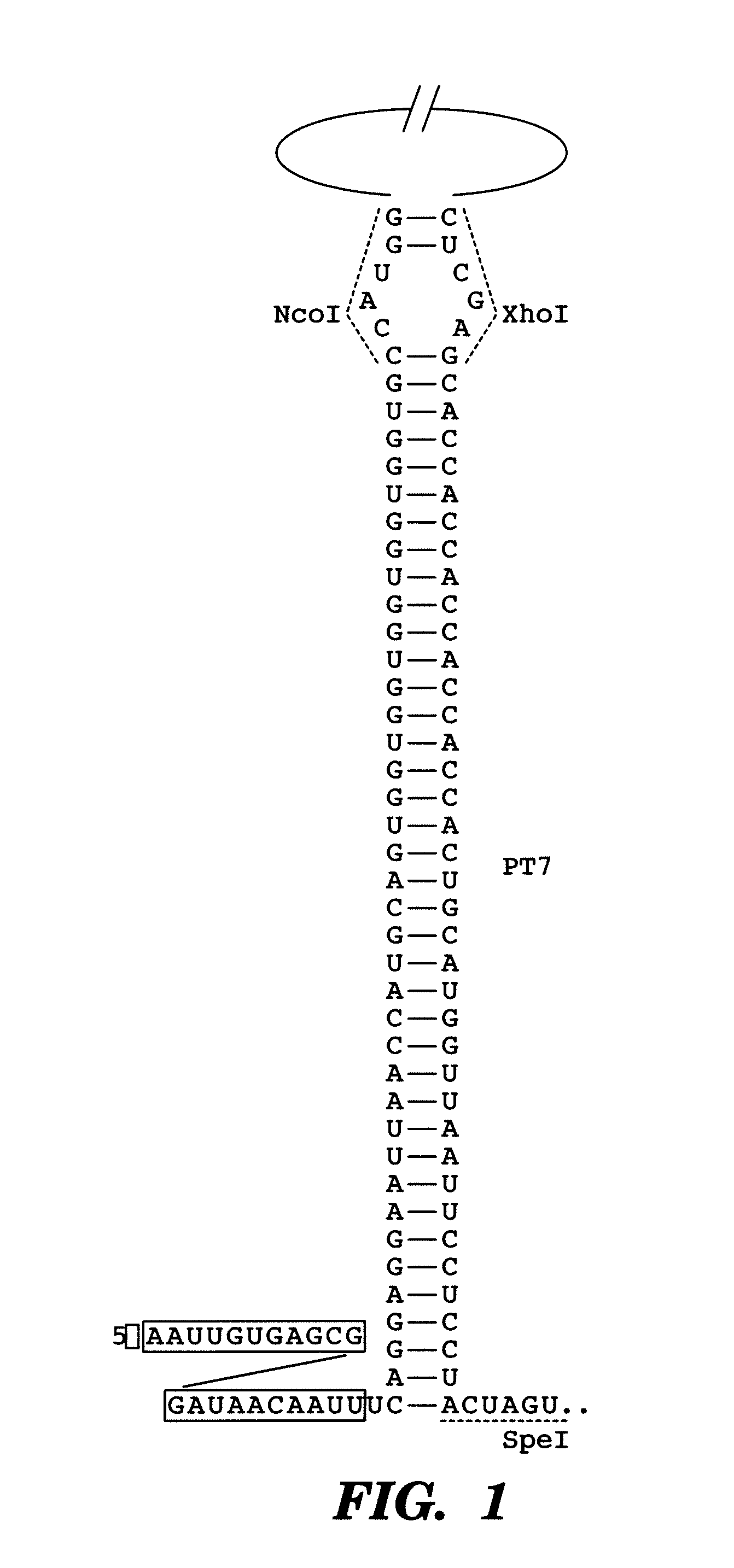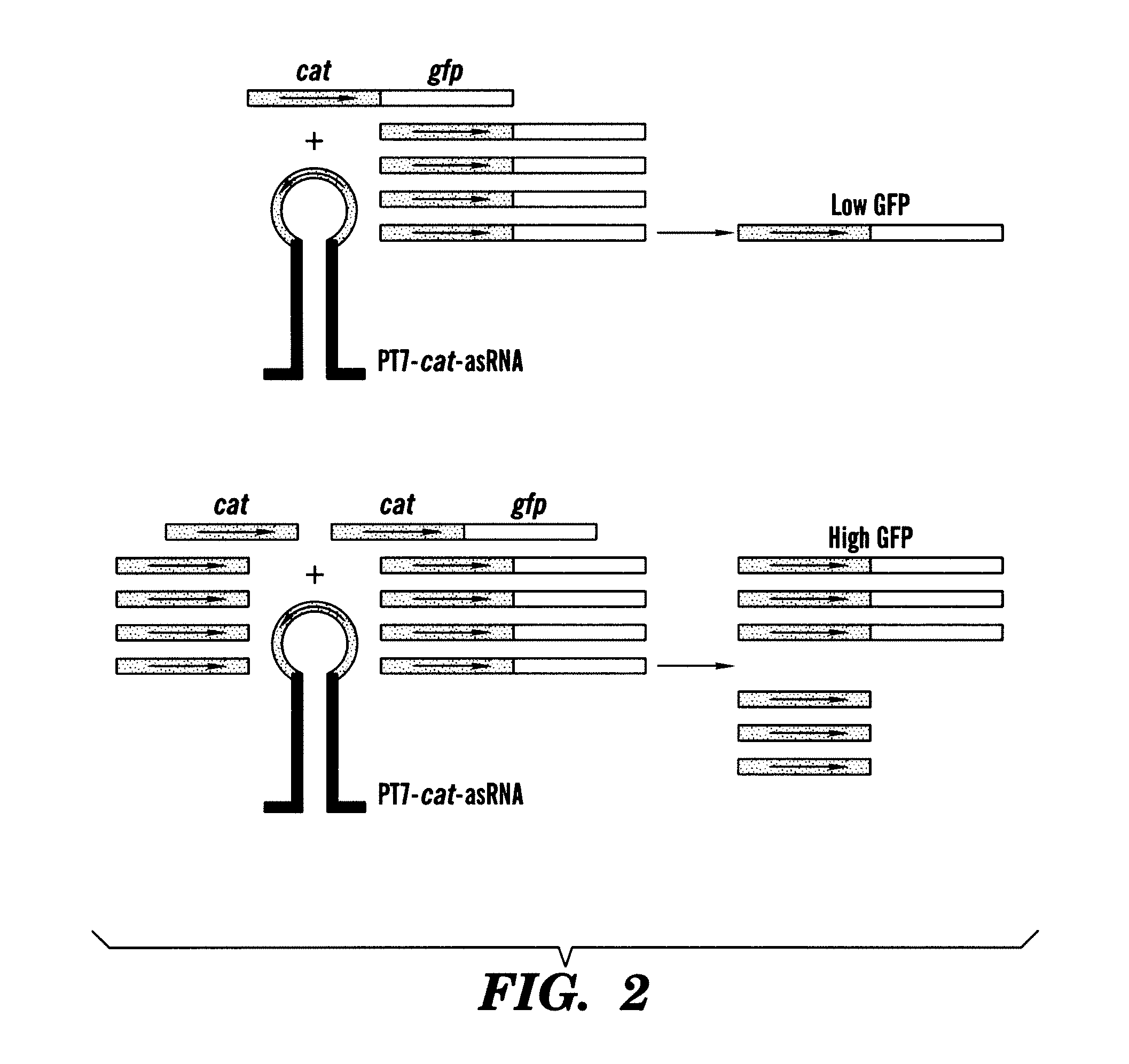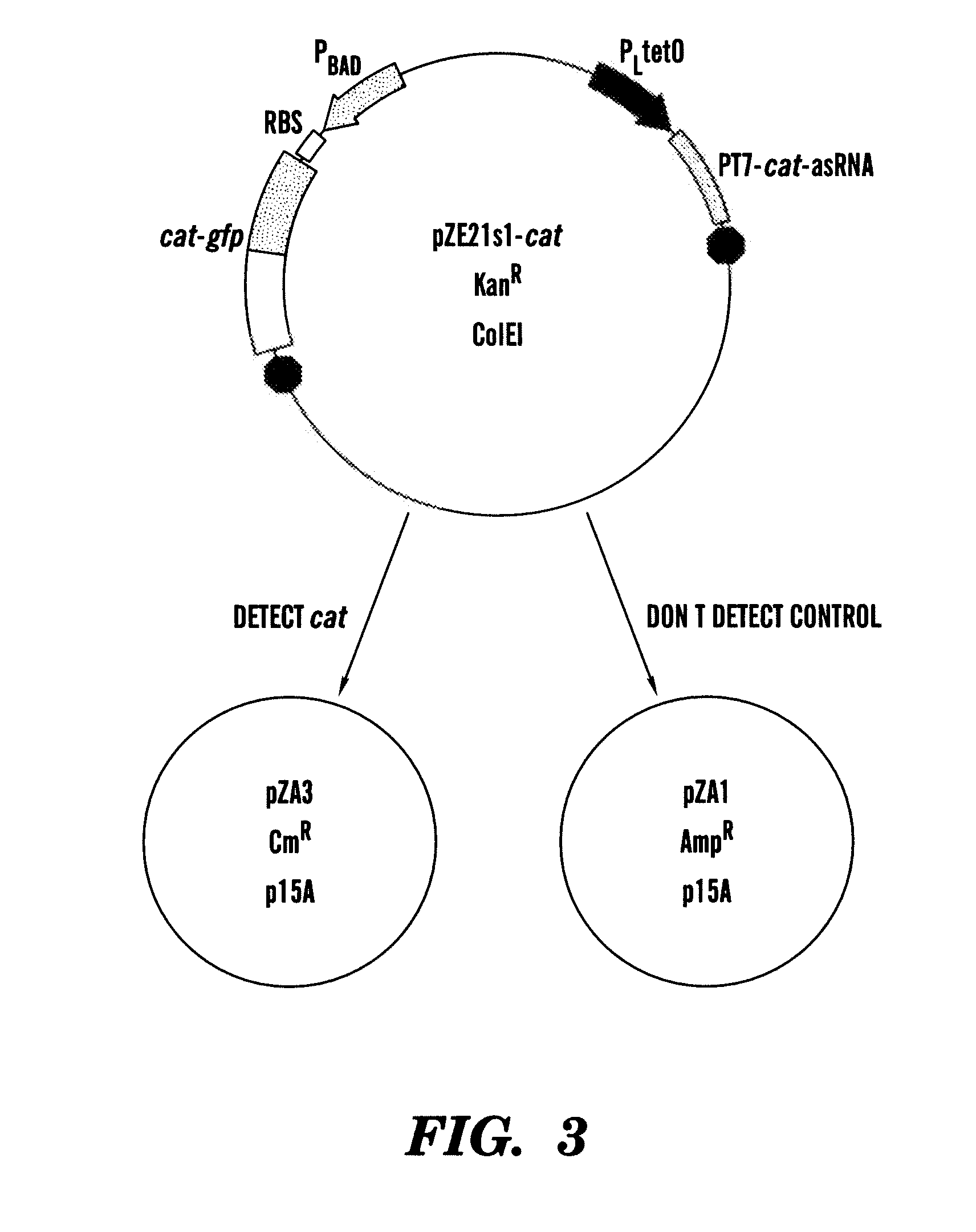In vivo gene sensors
a gene sensor and in vivo technology, applied in the field of in vivo gene sensor, can solve the problems of not keeping up with the evolution of antibiotic resistance, the cost and cost of cycling antibiotics, and the inability to control the resistance of resistant organisms, so as to achieve the effect of suppressing the expression of the effect gen
- Summary
- Abstract
- Description
- Claims
- Application Information
AI Technical Summary
Benefits of technology
Problems solved by technology
Method used
Image
Examples
example 1
A Bacterial Gene Sensor Circuit
[0184]As a first demonstration of the gene sensor circuit, described herein, an inhibitory nucleic acid construct was designed to express an antisense RNA target; the antisense resistance gene CAT. This was coupled with a sensor-effector construct with a portion of the CAT gene fused to GFP (odi) sequences. The read-out is GFP fluorescence.
[0185]In one example, the paired-termini (PT7) design described by Nakashima et al, 200646 is extended to produce an antisense RNA similar to that shown in FIG. 1. The PT7 construct produces an antisense RNA with longer half-lives in vivo, allowing for greater antisense effect46. Starting with the PT7 construct shown in FIG. 1, the NcoI and XhoI restriction enzyme sites were replaced by HindIII and NheI sites, respectively. In this example, the target gene encodes for chloramphenicol resistance and is denoted as cat. This target gene represents a very well-characterized and important gene in E. coli encoding chloramp...
example 2
[0186]In a second example, an RNA sensor design utilizes the pTAK series of plasmids described by Gardner et al, 200047. Instead of cloning the antisense RNA for the target RNA into the upstream region of lacI, the PT7-cat-asRNA construct is placed downstream of the lacI gene to create pTAKs3-cat as depicted in FIG. 6. This design is utilized for target genes where the primary mode of the PT7 construct's antisense RNA action is through RNA degradation, as this system relies on lacI-PT7-cat-asRNA binding to cat mRNA to trigger degradation of the lacI-PT7-cat-asRNA RNA46. Reduction of the levels of the Lac repressor increase GFP output. The RNA sensor design shown in FIG. 5 is realized by cloning PT7-asRNA fragments into the AscI site in pTAK132 from Gardner et al, 200047. The cI857 gene in pTAK132 is removed by restriction digest in order to obtain a continuous output behavior rather than discontinuous switch behaviour. This permits the effector molecule to be in two main states: on ...
example 3
[0187]The following example demonstrates how to determine the sensitivity and false positive rate of the gene sensor described herein. Generally, a higher false positive rate is preferred, i.e., greater sensitivity, at the potential expense of some false positives, as opposed to a higher false negative rate, in which positive cells are not detected.
Definitions
[0188]True Positive (TP)—cell has target gene and is sensed[0189]False Negative (FN)—cell has target gene but is not sensed[0190]True Negative (TN)—cell doesn't have target gene and is not sensed[0191]False Positive (FP)—cell doesn't have target gene but is sensed
[0192]Using standard statistical terms, let us define selective sensing as a low false-positive rate (meaning that a low number of cells that do not have the target are sensed or killed=FP / (TN+FP))
[0193]Still want respectable sensitivity (meaning that a good number of cells that do have the target are actually sensed=TP / (TP+FN))
[0194]FIG. 6 shows the sensitivity and fa...
PUM
| Property | Measurement | Unit |
|---|---|---|
| drug resistance | aaaaa | aaaaa |
| multi-drug resistance | aaaaa | aaaaa |
| resistance | aaaaa | aaaaa |
Abstract
Description
Claims
Application Information
 Login to View More
Login to View More - R&D
- Intellectual Property
- Life Sciences
- Materials
- Tech Scout
- Unparalleled Data Quality
- Higher Quality Content
- 60% Fewer Hallucinations
Browse by: Latest US Patents, China's latest patents, Technical Efficacy Thesaurus, Application Domain, Technology Topic, Popular Technical Reports.
© 2025 PatSnap. All rights reserved.Legal|Privacy policy|Modern Slavery Act Transparency Statement|Sitemap|About US| Contact US: help@patsnap.com



